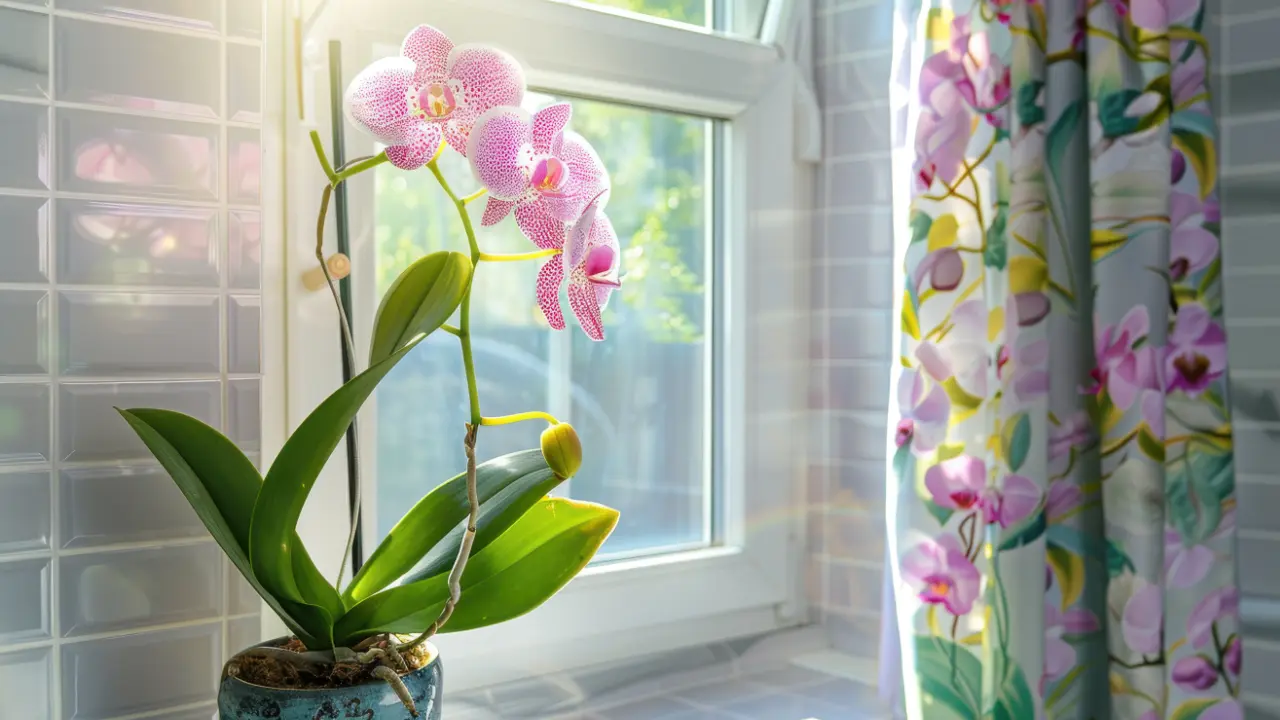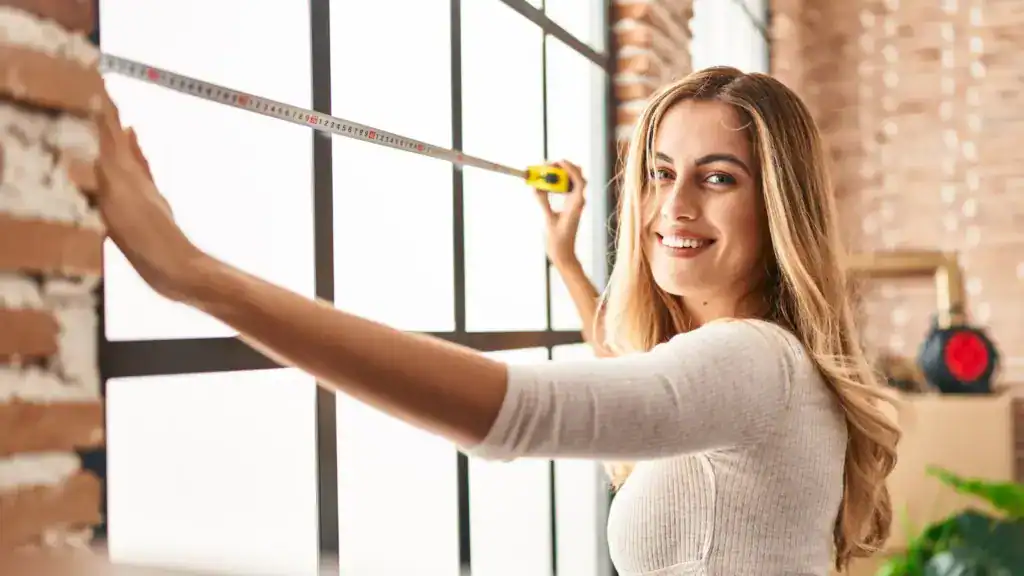No-Hole Solutions: How to Hang Curtain Rods Without Drilling

Raise your hand if you believe drilling is the only option for hanging curtains.
Thank you, class; now pay attention.
While drilling to anchor curtains is often the best option, it’s not the only option. And there may be times when it’s inadvisable.
- When your lease forbids drilling into walls. Or when it’s not worth the potential repairs to get your deposit back.
- When you have older plaster walls that are difficult to drill into without causing damage.
- When you redecorate every few months, and don’t want to patch and repaint holes in the wall every time you move things around.
- When you don’t have a drill handy and need a quick solution for hanging curtains.
In this blog, we’ve compiled no-hole methods for hanging curtain rods that won’t leave lasting marks.
1: Tension Rods — The MVP of No-Drill Curtain Hanging
Tension rods are incredibly easy to use. They rely on pressure between two surfaces to stay in place — no tools are needed!
How to Install a Tension Rod
- Measure the width of your window.
- Purchase a tension rod that matches your window size.
- Twist the rod to adjust the length until it fits snugly between the two sides of the window frame.
- Thread your curtain through the rod and secure it in place. Voilà!
Pros
- Adjustable and easy to install.
- No damage to walls or frames.
- Available in different finishes to match your decor.
Cons
- Best for lightweight curtains. The rod may not support heavy curtains.
- Only works for inside mounts (meaning inside the window frame).
2: Adhesive Curtain Rod Hooks — Sturdy, Yet Simple
Adhesive hooks for curtain rods can hold a fair amount of weight and are surprisingly strong when applied correctly.
How to Use Adhesive Curtain Rod Hooks
- Clean the area where the hooks will be applied. Dust or grime will weaken the adhesive.
- Apply the hooks to the wall, aligning them correctly for the curtain rod.
- Let the adhesive set for the recommended time (usually about an hour).
- Slide your curtain rod into the hooks, hang your curtains, and you’re done!
Pro Tip: Use hooks rated for the weight of your curtains. If you have thicker or heavier fabrics, look for hooks with a stronger adhesive.
Pros
- No tools are required.
- Works for both inside and outside mounting.
- Damage-free removal (as long as you follow removal instructions).
Cons
- May not hold up with very heavy curtains.
- If removed improperly, the adhesive can take some paint with it.
3: Magnetic Curtain Rods — Perfect for Metal Surfaces
Magnetic curtain rods are a dream solution if you have metal window frames (common in some older homes or commercial properties). They’re exactly what they sound like — curtain rods with magnetic ends that attach directly to metal surfaces.
How to Install a Magnetic Curtain Rod
- Find a magnetic curtain rod that fits your window.
- Position the rod on your metal frame, and it will cling like magic!
Pros
- Super easy to install.
- No tools or adhesives are required.
- Great for small spaces and lightweight curtains.
Cons
- Only works on metal surfaces.
- Unsuitable for heavier fabrics or curtains.
4: Command Hooks with Curtain Rods — A Clever Hack
Yes, those handy multipurpose adhesive hooks can also hang curtain rods!
How to Hang a Curtain Rod with Command Hooks
- Choose the appropriately sized Command hooks for your curtains and window.
- Apply them according to package instructions (cleaning the surface is important here too).
- Attach your curtain rod to the Command hook and thread your curtains through.
Pros
- No damage to walls or windows.
- Easy removal without leaving residue behind.
Cons
- May not hold heavier fabrics or curtains.
5: Twist & Fit Rods — An Elegant, Low-Effort Option
Twist-and-fit rods are a stylish alternative to tension rods, offering a more decorative look with no-drill convenience. These rods extend with twisting and lock in place until they fit snugly between two surfaces. They’re an excellent choice for an outside-the-frame mount.
How to Install a Twist & Fit Rod
- Measure the width of your window or frame.
- Adjust the rod to the correct size.
- Twist the rod to lock it in place.
- Hang your curtains and enjoy!
Pros
- Easy to install.
- More decorative and stylish than basic tension rods.
- Suitable for light to medium-weight curtains.
Cons
- May not hold heavy drapes.
- Requires a tight fit between two surfaces for optimal hold.
FAQs: Hanging Curtains Without Drilling
Q: Can I use the above methods for heavier curtains?
Most no-drill methods work best for lighter curtains, but some adhesive hooks and tension rods can hold up to 20 pounds. If your curtains are heavy, consider reinforcing the area with multiple hooks or choosing a sturdier method, like adhesive hooks rated for extra weight.
Q: Are these solutions removable?
Yes! Most of the methods listed here (tension rods, adhesive hooks, and Command hooks) are designed to be damage-free. Follow the instructions carefully, especially when removing adhesive hooks, to prevent damage to the wall or frame.
Q: How long do these solutions last?
Many of these methods will last as long as needed. Tension rods can stay securely in place indefinitely, while adhesive hooks typically hold up for several years if they aren’t exposed to extreme temperatures or humidity.
Q: Can I hang curtains on sliding glass doors without drilling?
Magnetic curtain rods or adhesive hooks with rods are both excellent options for hanging curtains over sliding glass doors, especially if the frame is metal.
Q: How do I ensure the adhesive hooks stick properly?
Thoroughly clean the surface before application. Use a mild detergent or rubbing alcohol to remove dust, dirt, and grease. After cleaning, allow the area to dry completely. When applying the hooks, press them firmly to ensure a strong bond.
Q: Can I use tension rods on uneven or irregular surfaces?
Tension rods require a smooth and even surface for the best hold. If the surface is uneven, the rod may not stay in place. In such cases, try an alternate method, like adhesive hooks, which can conform to slight irregularities, provided the weight of the curtains is within the recommended limits.
Q: Are these no-drill methods safe for rental properties?
The no-drill methods described are generally safe for use in rental properties. As long as you follow instructions carefully, they won’t damage walls, window frames, or other surfaces.


